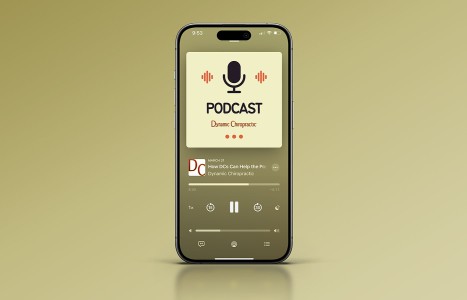It is estimated that 61% of patients with CTS avoid taking surgical options due to postoperative complications and costly surgical procedures. Chiropractic care offers a comprehensive and effective treatment for carpal tunnel syndrome, addressing the condition from multiple angles. Recent studies also have unveiled a game-changing adjunct to chiropractic treatments for CTS: nerve flossing.
Bioanalgesic Membrane Offers Technological Breakthrough for External Pain Control
Although scientifically unproven at the time, the Chinese knew clinically that stimulation of specific points had reproducible results in controlling pain and stimulating healing. Their concept of healing revolved around balancing the forces of yin and yang. Through the use of acupuncture, practitioners were able to sedate or stimulate Chi or energy within the meridian system. The existence of Chi in the form of electrical energy was scientifically documented by Robert O. Becker, M.D. He also discovered that the meridians had the electrical characteristics of transmission lines, that they transmit signals of injury by direct current and acupuncture points produce direct current potentials. Dr. Becker's discoveries spurred his interest to further investigate electricity's role in the healing process for the next 30 years.
During the past 30 years other researchers have heightened exploration of electromagnetic fields and their effects on the healing process. Thank to the dedicated scientific work by men like C.A.L. Bassett, Bjorn Nordenstrom, M.D., and Dr. Richard Borgens a new paradigm supported with scientific documentation has been proposed.
We now know the body has an electromagnetic "circulatory system" which provides intercellular communication through electromagnetic signaling. Becker has documented that our bodies present a positive polarity along the central axis and a negative polarity in the peripheral structures.1 He has also shown that this polarity is reversed in hypnosis, during anesthesia, and following an injury which creates a positive potential at the site of trauma. Becker has speculated this polarity reversal sets up a current of injury which initiates and signals the beginning of tissue repair and regeneration. Doctor Becker believes this current of injury is conducted by means of direct current signals passed along the Schwann and Glial cell sheaths that surround the neurons.
The internationally known radiologist and researcher, Bjorn Nordenstrom, M.D. describes tissues as biological batteries in our body. This concept is well-known and accepted by many researchers. Dr. Nordenstrom believes that an electrical voltage potential difference exists in the body which is created by a separation of oppositely charged ions. He states that the electrical energy of this biological battery can be tapped once this circuit is closed. The closed circuit permits the flow of electricity between oppositely charged areas. In his book on bioelectricity, Dr. Nordenstrom describes the activation of these biological semiconductor circuits following muscle activity and injuries both of which cause a build-up of positively charged ions.
Researchers have benefited greatly from the discovery that the body functions on a microcurrent level. Scientific studies using microcurrents have documented its ability to stimulate and even shorten the healing process. Research by Cheng et al., at the University of Louvain in Belgium, have shown that a current of 500 microamperes can raise the adenosine triphosphate (ATP) level almost 500 percent and increase protein synthesis and membrane transport.2 The Bourguignon study documented the intracellular influx of calcium within the first minute of microcurrent stimulation followed by an uncapping of insulin receptor on the cell membrane and enhancement of protein and DNA synthesis.3 Nessler and Mass in their study used seven microamperes of direct current to speed tissue repair and regeneration of excised rabid tendon.4 Their stimulated group showed a 255 percent increase in hydroxyproline uptake compared to the baseline controls. Histologic examination confirmed the tenoblastic repair had been enhanced by electrical stimulation.
Bioanalgesic Membrane Permits External Pain Control without Drugs
In 1985, a Chinese researcher discovered a semiconductive material that possessed electrical properties that proved beneficial to healing. In 1986, the invention was awarded a gold medal by the 35th Brussels World Fair for Inventions.
The membrane material is made from a non-woven, high density polymer that has an excess of electrons. The membrane uses no pharmaceutical agents, chemicals or electrical connections. The mode of action results from a closed biological circuit that is created when the bioanalgesic membrane is brought in contact with the skin. As discovered by Drs. Becker and Nordenstrom, injured tissue causes a build-up of positive ions. The bioanalgesic membrane has a measured direct negative current of five microamperes and thus completes the biologic battery with its negative polarity.
Clinically the membrane has a therapeutic life span of 48 hours; however, the therapeutic carry-over effect can last from several days to several weeks. The membrane has been successfully used as adjunctive therapy in the treatment of low back pain, myofascial pain, inflammation and swelling, sprains and strains, minor sports injuries, arthritis and bursitis, cervical and TMJ-related muscle spasms. The only contraindications are that it cannot be applied to open wounds, over areas of cancer, and over demand-type pacemakers.
References
- Becker, Robert O. and Selden, Gary. Body Electric. William Morror and Company, Inc. New York, 1985.
- Cheng, N., et al. "The effect of electrocurrents on ATP generation, protein synthesis, and membrane transport in rat skin." Clinical Orthopedics 1982; 171:264-272.
- Bourguignon, Gerard J.; Wenche, J.Y.; and Bourguigon, Lilly W.Y. "Electric stimulation of human fibroblasts causes an increase in calcium influx and the exposure of additional insulin receptors." J of Cellular Physiology 1989; 140:379-385.
- Nessler, J.P., Mass, D.P. "Direct-current electrical stimulation of tendon healing in vitro." Clinical Orthopedics 1985; 217:303.
Gerald H. Smith, D.D.S.
Newtown, Pennsylvania


